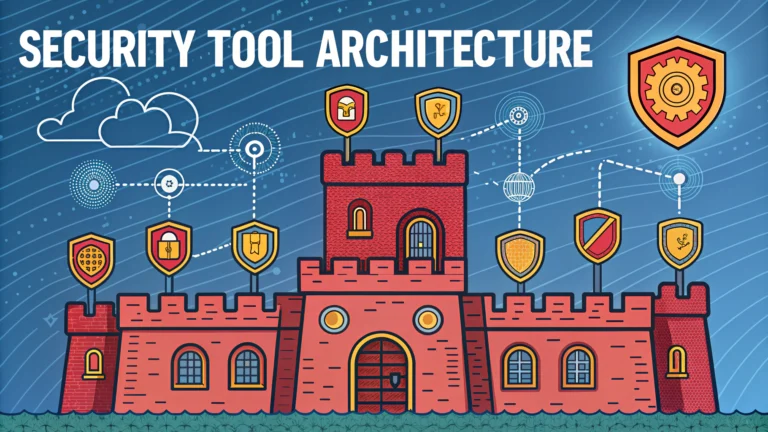Security tool architecture forms the backbone of effective penetration testing, enabling security professionals to systematically probe systems for vulnerabilities.
A well-structured security testing toolkit combines reconnaissance tools, vulnerability scanners, exploitation frameworks, and post-exploitation utilities to create a complete testing environment.
Understanding how these tools work together helps penetration testers choose the right combination for specific testing scenarios and organizational needs.
Essential Components of Security Testing Architecture
- Reconnaissance Tools
- Nmap – Network mapping and port scanning
- Maltego – Information gathering and data visualization
- Recon-ng – Web reconnaissance framework
- Vulnerability Scanners
- Nessus – Comprehensive vulnerability assessment
- OpenVAS – Open-source vulnerability scanner
- Acunetix – Web application security testing
- Exploitation Frameworks
- Metasploit – Exploitation development and testing
- Canvas – Professional penetration testing software
- Core Impact – Advanced penetration testing platform
Tool Integration Strategies
Effective security testing requires seamless integration between different tools through APIs, custom scripts, and automated workflows.
| Integration Type | Tools | Use Case |
|---|---|---|
| API Integration | Nmap + Metasploit | Automated scanning and exploitation |
| Data Export/Import | Nessus + Custom Reports | Vulnerability documentation |
| Workflow Automation | Custom Scripts + Multiple Tools | Scheduled security assessments |
Best Practices for Tool Selection
- Match tools to specific testing requirements
- Consider scalability and performance impact
- Evaluate licensing costs and open-source alternatives
- Check for regular updates and community support
- Assess integration capabilities with existing infrastructure
Tool Management and Maintenance
Regular updates and proper configuration management ensure tools remain effective and secure.
- Create documented update procedures
- Maintain separate testing environments
- Monitor tool performance and resource usage
- Document custom configurations and modifications
Building Your Testing Environment
Start with these foundational steps to create a robust testing architecture:
- Set up a dedicated testing network
- Install base operating systems (Kali Linux recommended)
- Configure virtual machines for different testing scenarios
- Implement proper isolation and security controls
- Document your setup and maintenance procedures
Moving Forward with Security Testing
Contact professional security organizations like OWASP (https://owasp.org) or SANS Institute (https://www.sans.org) for additional guidance and training resources.
Consider obtaining relevant certifications like CEH or OSCP to validate your security testing expertise.
Regular practice and continued learning will help you master the tools and techniques needed for effective security testing.
Advanced Testing Scenarios
Different security testing scenarios require specialized approaches and tool combinations to achieve optimal results.
- Web Application Testing
- Burp Suite for HTTP traffic analysis
- OWASP ZAP for automated scanning
- SQLMap for database penetration testing
- Mobile Application Testing
- MobSF for static and dynamic analysis
- Drozer for Android security assessment
- iMazing for iOS application testing
Automation and Reporting
Implementing automated testing workflows enhances efficiency and consistency in security assessments.
Key Automation Components
- Jenkins for continuous security testing
- Python scripts for custom tool integration
- Report generation templates
Compliance and Documentation
| Requirement | Documentation Needed | Tools |
|---|---|---|
| PCI DSS | Vulnerability Scan Reports | Qualified ASV Solutions |
| ISO 27001 | Security Assessment Records | GRC Platforms |
Strengthening Your Security Arsenal
Security testing architecture continues to evolve with emerging threats and technologies. Maintaining a flexible, well-integrated toolkit ensures readiness for future security challenges.
- Keep up with emerging security tools and methodologies
- Participate in security communities and forums
- Share knowledge and contribute to open-source projects
- Build custom tools to address specific testing needs
FAQs
- What is Security Tool Architecture in penetration testing?
Security Tool Architecture refers to the framework and design principles of software tools used for identifying vulnerabilities, testing security controls, and simulating cyber attacks in controlled environments. - Which are the main components of a security testing tool’s architecture?
The main components include reconnaissance modules, vulnerability scanners, exploitation frameworks, payload generators, reporting engines, and data collection/analysis units. - How does the command and control (C2) architecture work in security testing tools?
C2 architecture enables communication between the testing platform and target systems, managing multiple sessions, coordinating attacks, and collecting results through encrypted channels and customizable protocols. - What role does modularity play in security testing tool architecture?
Modularity allows for plugin development, easy updates, custom feature integration, and the ability to enable/disable specific components based on testing requirements. - How do security testing tools handle different authentication mechanisms?
They incorporate multiple authentication modules supporting various protocols (Basic, NTLM, Kerberos, OAuth) and maintain credential management systems for different testing scenarios. - What are the key architectural considerations for security tool scalability?
Distributed scanning capabilities, multi-threading support, efficient resource management, and load balancing mechanisms are essential for scalable security testing tools. - How do security testing tools maintain stealth during operations?
They implement traffic manipulation techniques, custom protocol implementations, timing controls, and IDS/IPS evasion mechanisms within their architectural design. - What architectural features ensure accurate vulnerability detection?
Version fingerprinting engines, signature matching systems, behavioral analysis modules, and false positive reduction mechanisms are integrated into the tool’s architecture. - How is data persistence handled in security testing architectures?
Through dedicated database backends, session management systems, encrypted storage mechanisms, and configurable logging frameworks. - What security measures protect the testing tools themselves?
They implement encryption for data at rest and in transit, access control systems, secure configuration storage, and anti-tampering mechanisms.







